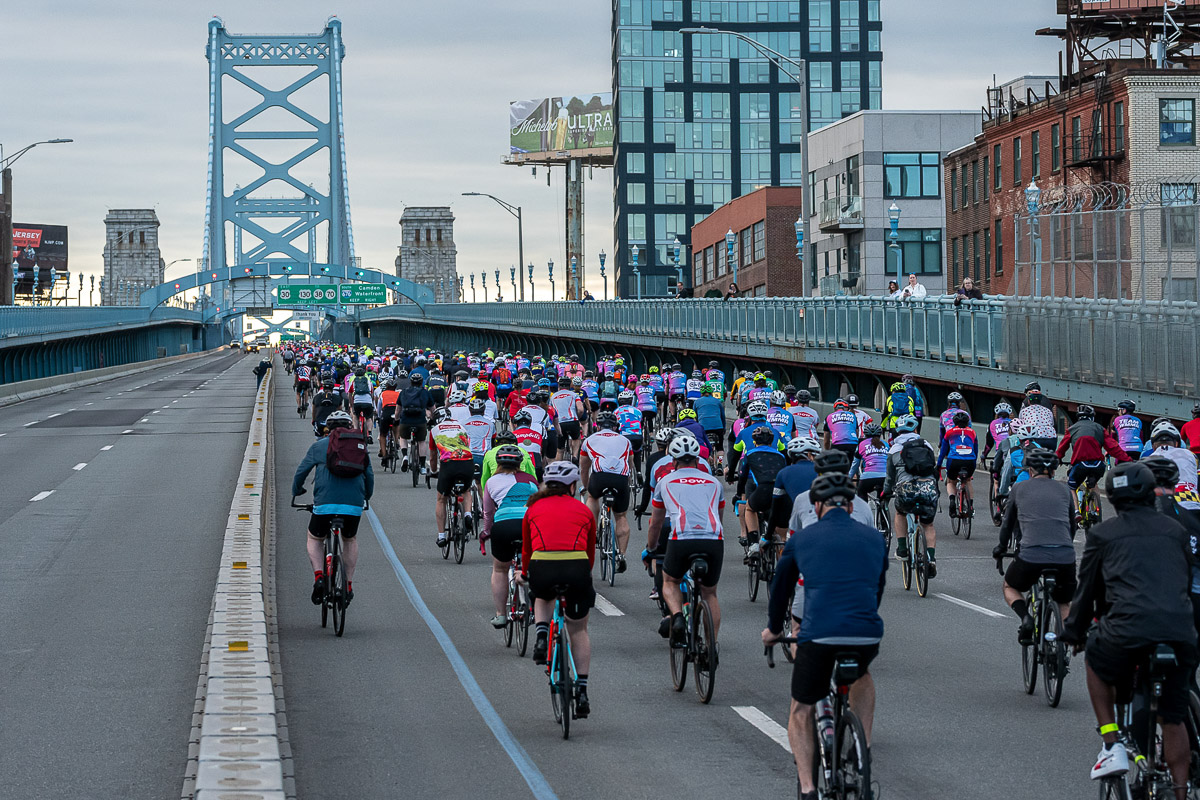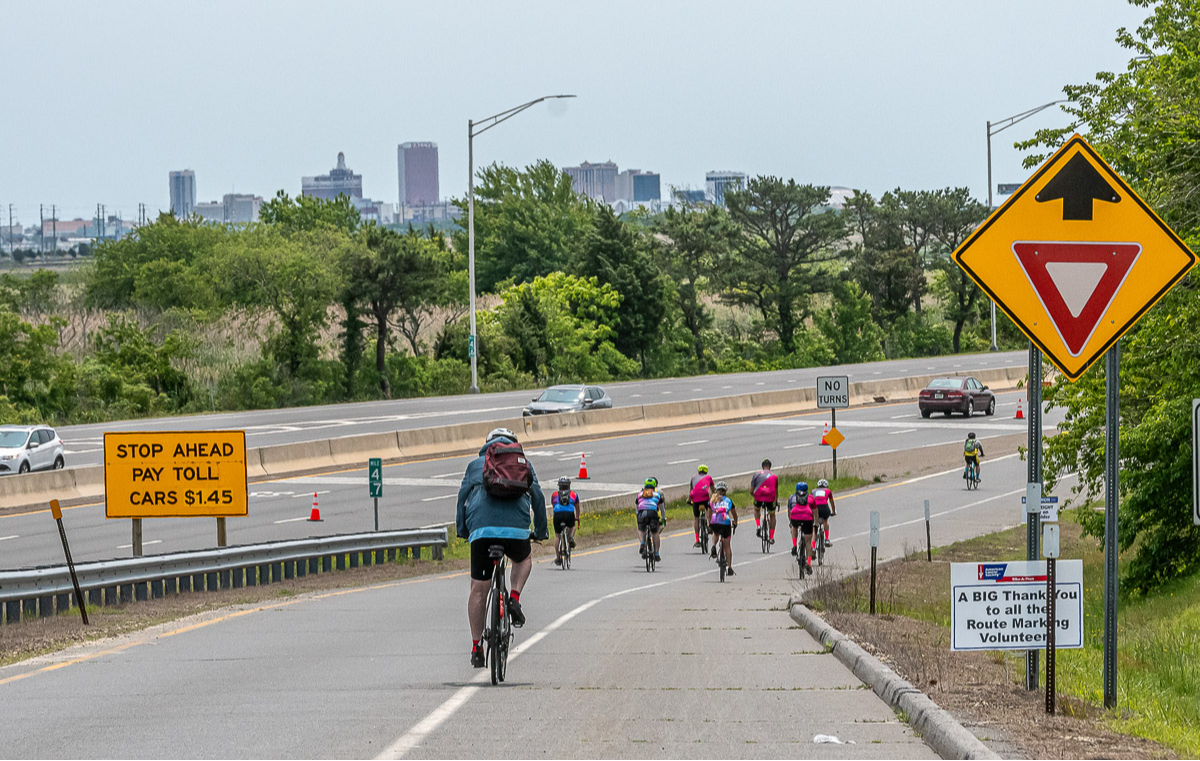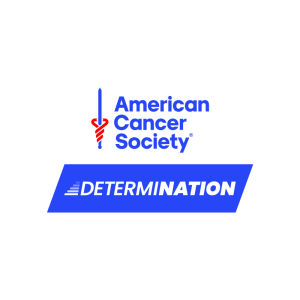Route & Event Safety
The safety of our cyclists, volunteers and general public is of utmost importance to us and the success of our event. The American Cancer Society believes that together every cyclist can accomplish the ACS Bike-A-Thon in a safe and courteous manner. For more detailed information about safety, please review the below information.

Riding Over the Ben Franklin Bridge - Safety
The Ben Franklin Bridge is an approximate 1.5-mile ride with an average up grade of 4.1% and an average downgrade of 3.4%. Multiple lanes are open for cyclist traffic, and the entire bridge is closed to vehicular traffic during the start of the event. Expansion joints are covered for safety. Cyclists are urged to ride with caution, especially on the downgrade where speeds should not exceed 20 mph and assure that all water bottles and other personal belongings are well secured to their bicycles.

Riding down the shore - Safety
Approximately the last few miles of the route before reaching Ventnor City will be along the Atlantic City Expressway. The right lane will be coned off and dedicated for cyclists only. Even though the lane is closed off, please be sure to ride on the shoulder. Significant police patrol will be provided at all intersections and locations with merging traffic to assure a safe entry into Ventnor.
Route Support
Command Center, SAG, Motorcycle, and Bike Shops
The ACS Bike-A-Thon is a fully supported ride with safety as our number one concern. Below is all of the support available to our riders, should they need it. Each of these can be reached by dialing the number on your rider wristband.
- Command Center Support- Located at the endpoint, the command center is available throughout the entire day via phone from which the appropriate help will be dispatched, including ambulance service in the event of a health emergency.
- Support and Gear (SAG) Vehicles- GPS equipped SAG vehicles, which can be dispatched to transport cyclists and bikes to the next rest stop or provide minor assistance.
- Bike Shop Support- GPS equipped local bike shop vans, which can be dispatched to provide limited mechanical assistance on the route.
- Motorcycle Support- Provides added mobility to more quickly get to a location where assistance may be needed and provides for a wider range of coverage and traffic control.
Event Safety
Overall Safety Measures
We regularly review, evaluate, and assess all aspects of our ride to be proactive in implementing safety measures such as:
- Selecting a date and time with an objective of hosting the ride when the weather is most conducive to riding.
- Designing a route taking into consideration road surface conditions, traffic volume, intersections and shoulders, number of riders, etc.
- Staffing adequate support to assist participants along the route, including traffic control, safety riders, medical support response teams, bike shop support, route marking and signage.
- Holding a pre-ride in the weeks preceding the event to assess road conditions, identify and address potential concerns and staffing needs along the route and implementing same.
- Modifying the start incorporating staged rider releases to alleviate congestion and improve approach and travel over Benjamin Franklin Bridge.
- Covering the expansion joints on the Ben Franklin Bridge to reduce risks for cyclist riding over joints.
- Strategically establishing rest stops every 10–15 miles that are stocked with ample food and beverages to replenish and rehydrate cyclists, as well as bike shop support to attend to needed bike repairs.
- Locating police details at all critical intersections.
- Providing GPS equipped Support and Gear (SAG) wagons, bike shop vehicles, and motorcycles to patrol the route.
- Continuous monitoring of the event from a centralized command center including on site ambulance and EMT service.
- Providing refreshments for cyclists upon crossing the finish line.
Guidelines for Participants
- Complete the emergency information label on the back of your bib.
- Carry photo identification.
- Ride at safe speeds. Slow down for congestion and hazardous conditions.
- Ride to the right. Pass to the left.
- Give a clear signal with your voice when passing a slower rider/runner–call out “on your left.”
- Maintain adequate distance between you and the participants around you, especially going downhill.
- Exercise caution when changing lanes. Obey posted signs, event leaders, law enforcement and first responders.
- Do not block the road. If you need to stop, always move off to the side and do not block others from passing. Be extra alert at intersections and driveways.
- Slow down when approaching our designated rest areas.
- Cyclist must wear helmets. Use hand signals when turning or stopping.
- No headphones, cell-phone use, picture taking, or use of mobile devices while riding/running.

